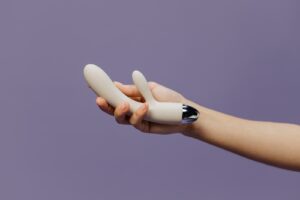Despite performing the same function in all animal species (fertilizing eggs), sperm are among the most diverse cells. They come in a dizzying array of shapes and sizes.
Norway rats have some of the longest sperm, while golden hamsters produce the largest numbers per ejaculate. In both cases, the males’ large testicles allow them to eject more sperm that can reach the female’s eggs.
Norway rat
The Norway rat is one of the most popular laboratory animals in biomedical research. It has a wide range of behavioral and physiological traits that make it a valuable tool for researchers. For example, it can be used to model the aging process of the testis and epididymis. It also demonstrates selective age-dependent pathological changes in the testes and epididymis. The rat is also known for its robust spermatogenesis, but this activity decreases with age.
Its sperm have heads that curve like talons and are capable of hooking together to form speedy “trains” that cooperate to reach the egg first. Until recently, scientists were puzzled by these unusual features. They now know that the larger the testicles of a rodent, the more likely its sperm will have curved heads.
Although sperm perform the same function across all animal species—fertilising eggs—they are incredibly diverse in size, shape and number. For instance, the ejaculation of a mouse contains about 9.5 million sperm, while that of an elephant produces more than 200 billion. These differences may be due to competition between sperm for fertilising the eggs.
House mouse
In many species, males produce sperm with a variety of shapes and sizes. These vary according to the animal’s size. In fact, the smallest animals produce the most sperm: a tiny fruit fly produces sperm more than 20 times longer than its body and 1,000 times larger than human sperm.
These long sperm can be difficult to get to the egg, but it is possible to boost sperm’s fertility by increasing their speed. A new study reveals that a gene tied to the deer mouse’s “Don Juan” mating behavior makes their sperm swim faster by expanding the midpiece of each sperm.
The findings are important because they validate a principle known as Haldane’s rule. This states that when an individual carries a gene with an evolutionary benefit, the gene becomes more common in hybrids. This effect is strongest for genetically different populations, such as hybrids of house mice and wild-type house mice (Mus musculus sp.). Hybrids of the two breeds also tend to have longer sperm, which is expected because their genes are more similar.
Golden hamster
Despite performing the same function in all animals (fertilizing eggs), sperm vary enormously. These tiny tadpole-like particles are the most diverse cells in the animal kingdom, and even the same species can produce very different sperm. This is mostly due to the fact that animal species have evolved differently, but other factors also play a role.
Researchers have found that larger mammals tend to have longer sperm than smaller animals, but it doesn’t explain everything. For example, the tiny fruit fly Drosophila bifurca produces coiled sperm that is nearly 58 millimeters long. Scientists speculate that this is because the longer sperm are less likely to be diluted or lost in the female reproductive tract.
The golden hamster (Mesocricetus auratus), also known as the Syrian hamster, is a small rodent in the genus Mesocricetus that is often kept as a pet. In the wild, they are solitary and nocturnal and live in burrows that they dig themselves. They are also well-known laboratory pets and make up the majority of the animals used in genetic research.
Honey possum
The honey possum Tarsipes rostratus is one of the smallest mammals on Earth, but it produces the most sperm. Its males produce the longest sperm of any mammal, a third of a millimeter, and their testes represent 5% of their body weight.
The little marsupial is the only animal in the world to live exclusively on a diet of nectar and pollen, making it an important pollinator for a range of flowering plants, including the nodding banksia Banksia nutans. Honey possums have a long, protruding tongue with a brush tip that gathers pollen and nectar from flowers like a honeyeater or hummingbird.
They can live on a diet of about one teaspoon of nectar per day and consume about a green pea of pollen every 24 hours. When threatened, honey possums hide in tree hollows or other shelters such as abandoned bird nests and rock crevices. They also use daily torpor to reduce their energy requirements overnight. A female carries her young, or joeys, in her pouch until they are ready to leave the safety of her mother’s arms.
Whale
Sperm whales are the animals that produce the most sperm in the animal kingdom. They have enormous testicles, which allows them to ejaculate tons of semen, increasing the chances that it will fertilize an egg in a female.
These large toothed whales live in all of the world’s oceans, inhabiting deep water habitats where they feed on squid and other cephalopods. They are the largest mammals that have internal fertilization (they carry eggs inside their bodies).
They are expert divers and can dive to depths of 3,000 feet. They are thought to hunt squid by echolocation, using clicks that they emit while underwater to identify the creature. They also have unique defensive behavior, gathering together in a “wagon wheel” formation, with their tails facing out like the spokes of a wheel to fend off attacks from other whales and sharks.
Sperm whales were commercially hunted up until the 1970s for spermaceti, a waxy substance that forms around squid beaks in their stomachs, and ambergris, which is used in perfume. Today, they are listed as endangered. They are threatened by accidental entanglement in fishing gear, pollution from plastic waste, and noise pollution.
See Also:





